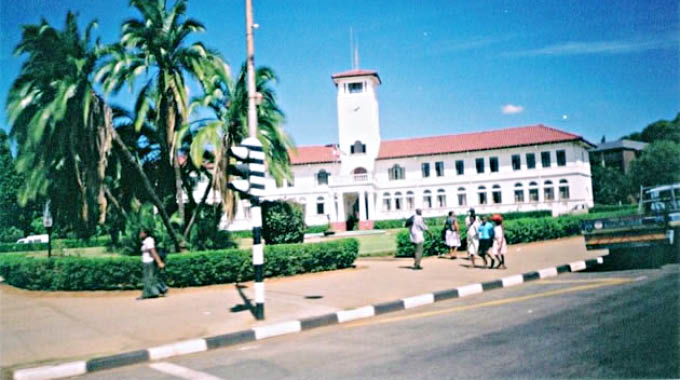Wildlife conservation can be promoted through school curriculum

Mahlabezulu Zulu
VARIOUS avenues ranging from community conservation meetings to tracking, chasing and arresting poachers have been employed in an effort to conserve wildlife especially in communities neighbouring wildlife protected areas.
Since most of these activities employed to conserve wildlife involve “human beings thinking” it has been difficult to rate the best of the approaches as such are employed in different scenarios and environments.
Due to increase in human population, and demand for land for human settlements, Zimbabwe has some communities mainly communal areas and few cities and towns like Dete, Victoria Falls, Kariba and Vumba which share boundaries with wildlife protected areas.
Due to the need for various services like education, health and other relevant services by such communities, through Government’s effort, and other concerned stakeholders, schools, clinics and other social amenities have been constructed in the areas.
It is good that effort is made for children attending school in such places to be given the same learning environment and opportunity to cover the same curriculum like their counterparts nationwide.
Zimbabwe’s school curriculum promotes preservation and conservation of culture and natural resources, supports health, improvement of the economy and promotes science learners for technological and advancement of the country.
Due to their geographical location some schools can take advantage of, for example, surrounding farms, raw material processing industries or wildlife protected areas to reinforce concepts related to such sections which play a vital role in the economy of the country or bring to “light” to learners on possible career paths.
It is unfortunate that teaching, and learning might be effective in schools, but children in some schools might be like ‘’loaded bullets’’ in a gun which are waiting to be misfired during the shooting process.
Due to different environments these learners come from, some come from families and communities which lack role models which can motivate them to learn and promote such sectors boosting the economy, for example wildlife which is tourism-related.
Lack of guidance, and understanding on the benefits of the environment where such learners come from has resulted in lack of support of certain sectors of the economy which might exist in different communities in different parts of the country.
Wildlife-related sectors — safari or forestry — are some of the sectors which are considered to have social, economic and ecological benefits and need protection by those who stay around wildlife protected areas.
Use of some wildlife species as traditional medicine and some animal names for social identification like Elephant — Ndlovu/Zhou, Eland — Mpofu/Mhofu and many others — are social benefits that are also supportive of tourism-related industries.
Ecological benefits have also been realised when we plant some of these indigenous plants like the Sickle Bush — Ugagu/Mumhangara and Monkey Bread — Ihabahaba/Mubabathe and others which easily adapt and improve soil fertility and are preferred by most herbivorous animals because of their palatable and nutritious pods, leaves or roots.
Regarding the effective protection of such an important sector of the country, the following questions will always linger: Which is the best approach to conserve these natural resources by communities?
Can’t a sound education system with emphasis on wildlife studies which are part of the school’s curriculum yield better results as far conservation of wildlife is concerned in communities around wildlife protected areas?
I agree that choosing a career by learners from different communities has no boundary.
Career selection comes in many forms.
It can range from a rural kid admiring what his or her parents are doing in life to admiring a pilot flying a plane.
It is good that even children from towns and cities have chosen careers which are related to wildlife studies in institutes of higher learning, for example forestry and ecology and have become exposed, and experienced to the wildlife environment during their industrial attachment at wildlife-related research and conservation organisations.
Education, being well-known to be a strong weapon to solving some of the problems can be used to promote wildlife conservation, that is, environment, wildlife research and conservation in communities.
It is good that children attending schools around such communities grasp concepts that wildlife, and other natural resources need to be conserved for their benefit, and this will promote a sense of responsibility and a number of them are likely to choose careers related to their environment.
They will always emphasise on protecting anything related to the “survival” of their jobs that are wildlife-linked.
It will be like “biting your tail” if you do not protect a resource which promotes the continuous existence of your career.
The negative effects can also cascade to families which stay in communities surrounding such protected areas from which they come, especially if they are breadwinners.
A wildlife conservation education approach which starts at foundation level through emphasis of learning about wildlife by children in schools around protected areas can yield great results as the target group will realise the importance of the natural resources as it grows.
– Mahlabezulu Zulu is a conservationist who has worked for various wildlife research, and conservation organisations in Hwange National Park, and Fuller Forestry in Victoria Falls.
He can be contacted on 00263(0)713269827/0776196171.
Email [email protected] or [email protected]








Comments